How to Grow Saffron in Your Backyard
Saffron is a spice that has been used for centuries. and it also grows well in your backyard! Here are some tips on how to grow saffron at home.
When it comes to valuable spices, saffron is at the top of the list. This spice is the most expensive in the world and has even been referred to as “red gold” and you can find yourself paying between $10 and $13 for a single gram of saffron. Saffron is a great addition to your perennial garden.
Saffron is a spice derived from the flower of Crocus sativus and has been used for centuries as an antidote to sadness and depression.
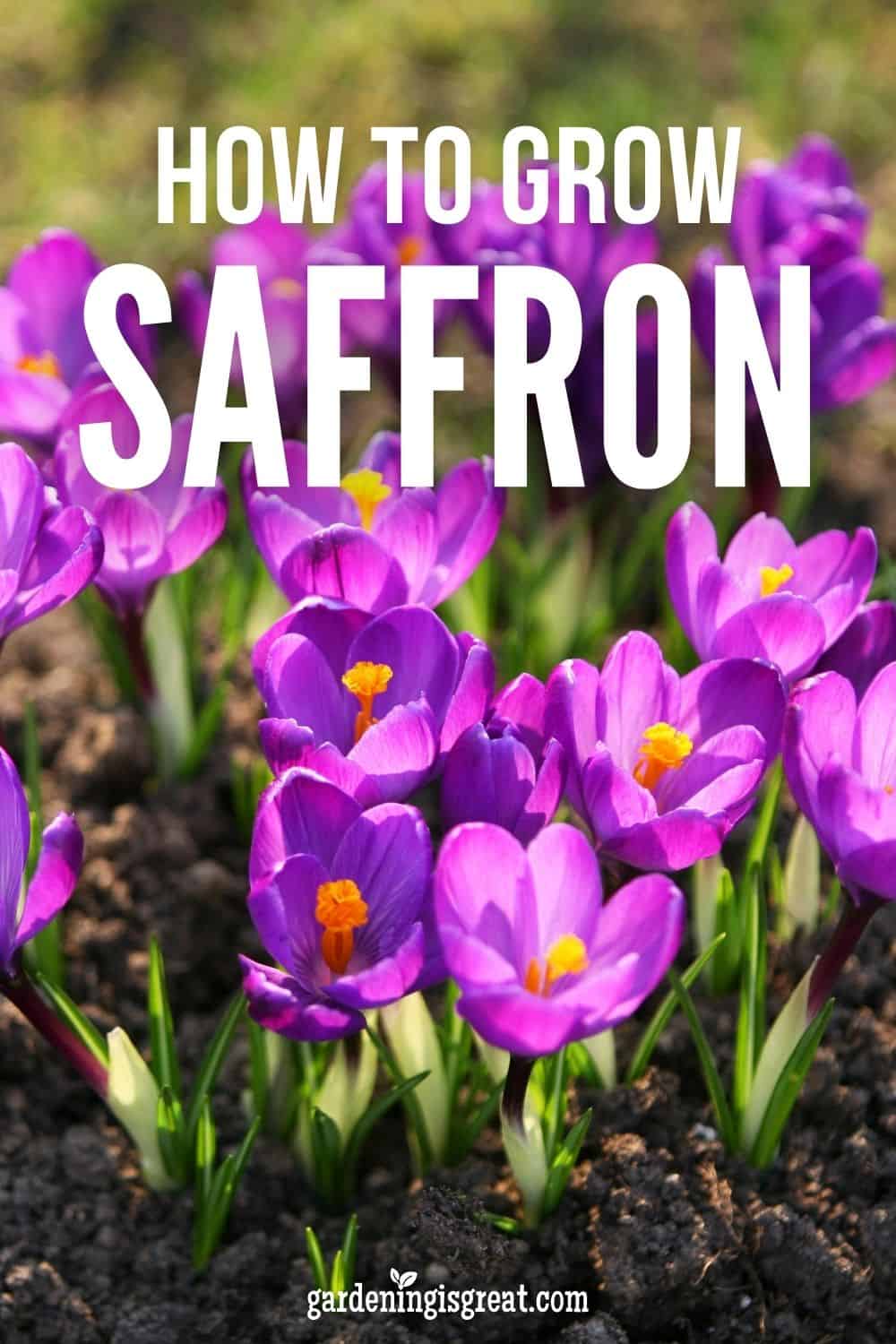
This post contains affiliate links that earn me a commission at no additional cost to you.
How to Grow Saffron Crocus Bulbs
Saffron can be grown in USDA growing zones 6 through 9 depending on the side of the country where you live. Saffron should be grown where the summers are relatively dry and will not do well in tropical areas.
In the dormant period over the summer, you should keep your saffron dry. If you live in a tropical area consider growing in pots that you move indoors or under a covered porch to help keep them dry.
Pots can be just as useful if you are growing saffron in an area that gets cold winters otherwise you will need to dig your saffron up before the winter cold hits. In zones 7 and 8 saffron can thrive in the ground undisturbed year-round. Plant your saffron in the fall when it does best with a lot of water as the roots begin to form.

You want to grow saffron in a dry area. Saffron can not grow in waterlogged areas. When planting directly in the garden use soil amendments like fresh compost and organic matter to create a mound that will help with drainage allowing your bulbs to keep dryer while dormant in the summer.
This will also help keep your bulbs nourished in the first year. In the following years, you can begin to fertilize your saffron bulbs once a year in the spring with a high potassium fertilizer to encourage growth and blooms.
Planting Saffron Bulbs
Plant your saffron in full sun to help it thrive and stay well dried in the summer months. Saffron can handle light shade but does best in full sun if at all possible. Avoid planting right along your home foundation where water is likely to sit even if it has full sun.
Saffron bulbs are small and rounded with a slightly pointed top. Plant them 3-4″ deep and 2-3″ apart with each point facing upwards for the best results. If they are not perfectly pointed up they will shift as the roots and stem grow so don’t worry if they are not perfect or shift a bit as you cover them with loose well-draining soil.
Saffron should be planted in the fall and provided with plenty of water to help encourage your saffron to put out strong roots that will help it begin to grow foliage. You may see some foliage in the fall but will likely not see any pop-up until the following spring.
Be sure to plant these at least 4 to 6 weeks before the first frost to allow for plenty of roots before the cold starts to stunt the growth.
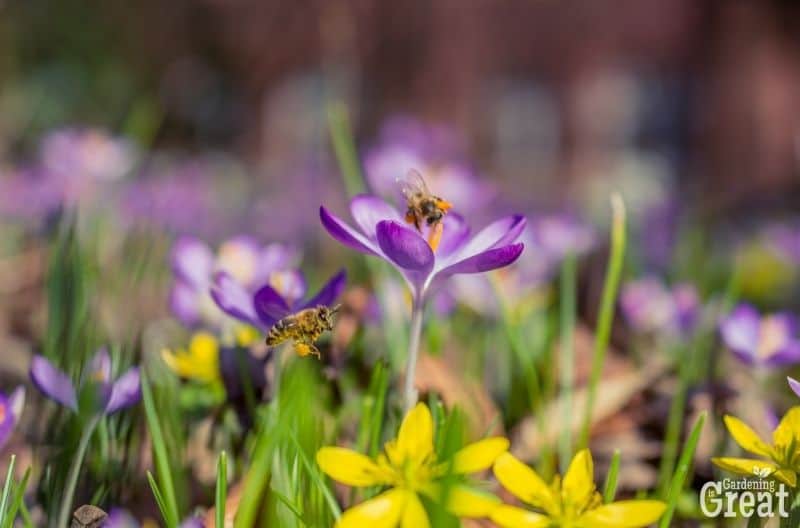
Saffron Plant Care
In the spring you will begin to see the green foliage of the saffron crocus bulbs pop up and grow. As the summer heat takes over this will slow to a dormant phase before picking back up in the fall when the bloom will appear.
This flower only blooms for one week so if you plan to harvest your saffron you will need to keep an eye on it. Saffron typically blooms between late October and early November.
Saffron like other bulbs can struggle with a few problems like rodents eating the bulbs while they are planted. Properly caring for your garden can repel digging animals and can help protect your saffron.
When it blooms you want to get to the stigmas for harvesting before birds try to take the blooms.
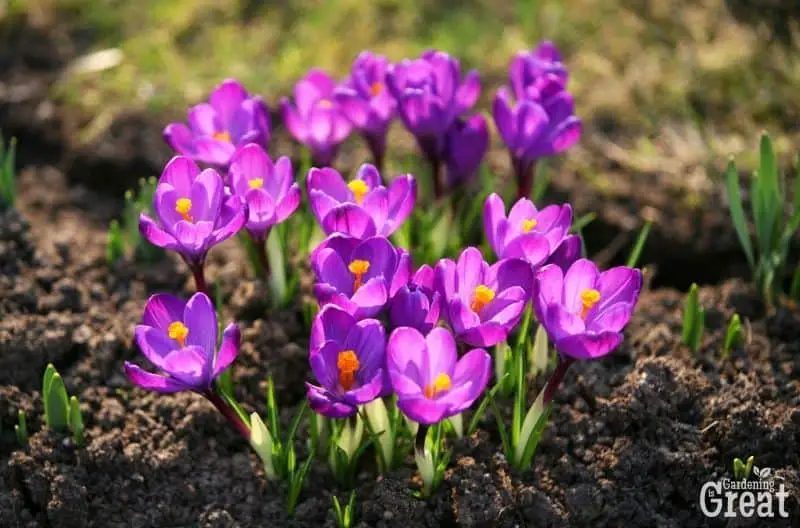
After your saffron crocus bulbs have finished blooming you will see the green foliage remain. Allow this to keep growing to provide energy that your bulbs will store for regrowth in the spring.
In cooler climates, this foliage will yellow and die back as the weather turns cool. If you live in a hotter area it may die off in the spring before going dormant again until the cooler fall weather arrives.
Saffron is from corms and sadly does not produce seeds that can be used for growing more saffron. To increase the number of plants you have you should divide your saffron bulbs after they die back. This will increase how many more corms each one produces in the following years and give them more space and nutrients.
If you are digging your saffron up each year to store indoors this is the perfect time to divide. Otherwise, you can divide every 2-5 years to space out your plants and produce more saffron.
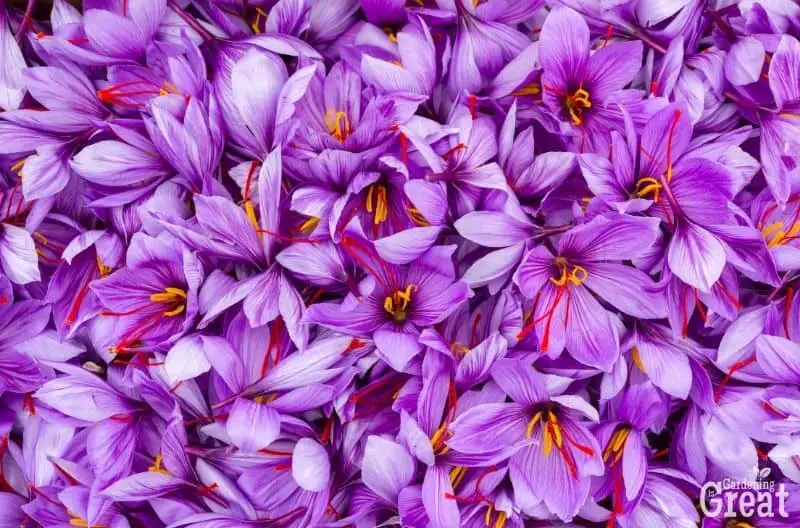
How to Harvest Saffron
The best part of growing saffron in your backyard is getting the reward of fresh homegrown saffron. It is much cheaper to grow a bed of saffron for storing and cooking than it is to purchase saffron at retail prices.
With proper care, your saffron crocus bulbs will provide you with plenty of fresh saffron for years to come.
Once your flowers form you can pluck the stigmas from the center of the flower using clean dry tweezers. This is best done before the flower fully blooms to prevent damage to the stigmas from animals and wind but if you miss that point you can harvest at any time when the flower is healthy and strong.

Dry your saffron before storing. For the best results layer between two layers of paper towels and place in your dehydrator set to 140 degrees for 2 hours checking to be sure it is fully dried. If you do not have a dehydrator you can layer between two paper towels and leave them in a dry place for a few days to dry naturally.
After drying your saffron, store it in an airtight container. Adding a silica packet can help keep your saffron fresh even after opening and closing the container for use. Store your saffron in a cool dark place to preserve its rich color and flavor.
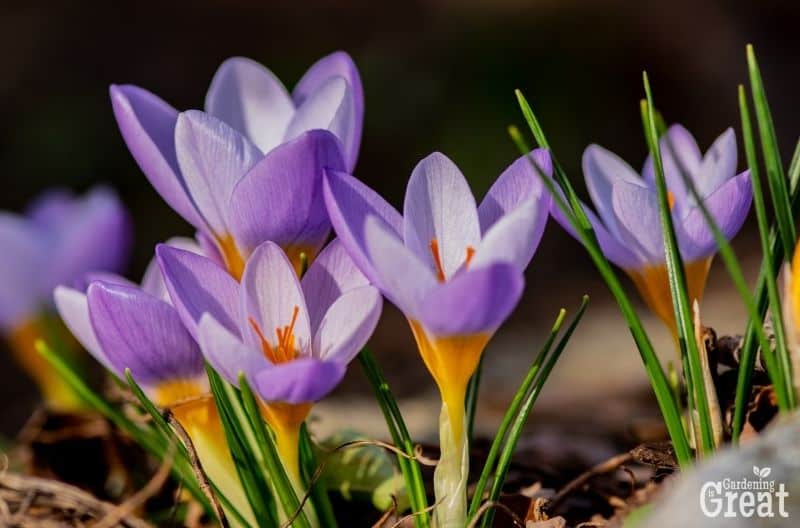
Growing saffron is not difficult, but it does take time. The plants will need a minimum of 6 months before they start blooming, so don’t expect instant gratification from your investment to grow high-quality saffron!
If you’ve been struggling with planting or growing other crops for some time now, consider giving this hardy plant a try – the resulting reward may just make all that effort worth it.
